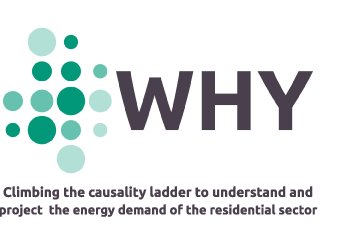Causal diagram: methodology and results D2.2
The objective of this task, and its associated deliverable, is to build a Causal Diagram for the electricity consumption at households including the reasons that affect consumer participation in EE, DR, ES and DG actions. The original plan consisted in conducting a face to face Delphi Method where a group of experts covering at least one expert from all the subjects identified in Task T1.3.
However, the COVID19 knocked on all our doors and what initially was thought to be a physical approach has been converted to an online endeavour. To this purpose, we expanded the aspects of the energy transition to be studied. In the DoA we were only concerned with the electrification of the transport and heating sector, while in the current deliverable we were more ambitious to expand the study to the energy efficiency sector and to the flexibility markets. With all of these four aspects of the energy transition, we created an online activity based on fictional scenarios in which recruited experts (N=33) had to identify the overarching determinants that affect or load over constructs related to making an investment decision.
The qualitative information collected was analysed using the universal psychological needs, such as competence, relatedness, popularity, stimulation, meaning, security, or autonomy (many of them very much connected to the self-determination theory) as a framework to create a common glossary of 32 terms. The glossary is made up of two levels. The top tier level is all about the psychological needs plus one theme related to financial factors. The second tier is related to the determinants in each category. With the glossary created, the research team drafted a relationship diagram, very close to a causal diagram, of the determinants that impact an investment decision having in mind the different end-user archetypes/profiles that may be present in households. Therefore, for each profile/archetype identified, the research team selected the most relevant determinants that can make a person or a family to finally invest money and time on one of the four different aspects of the energy transition identified. To this aim, the stages of changes inspired on the transtheoretical model of behaviour change were used. The results open space for further refinement and validation. Therefore, most of this work and outcomes will be further explored in the following task of the WP3 which is the creation of the causal model.




